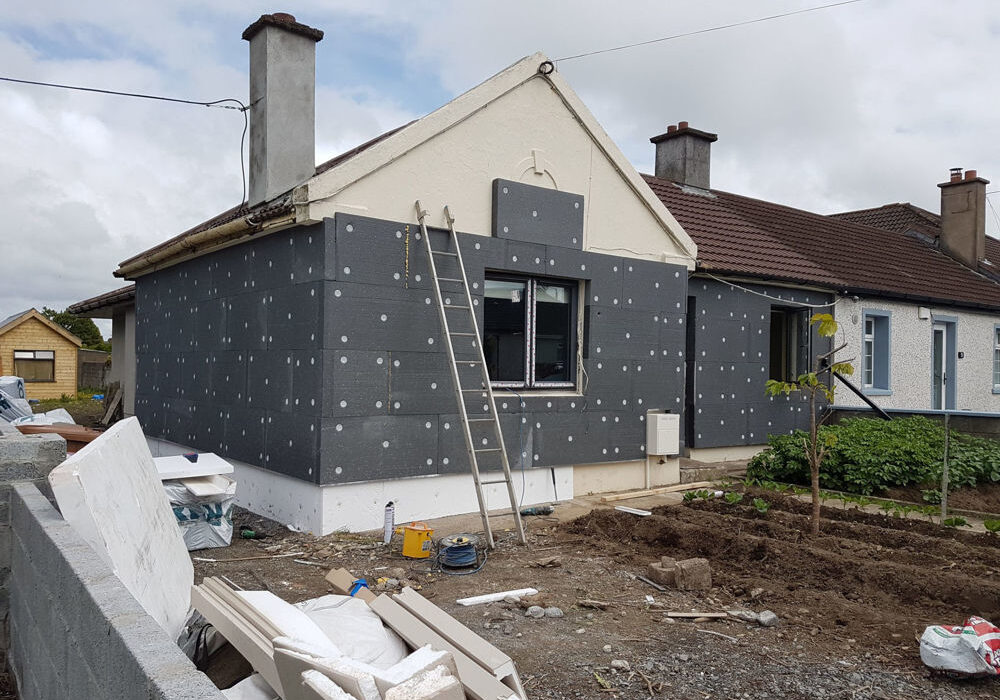As the bitter cold wind whistled through the cracks in his century-old home, John realized something had to change. Each winter brought higher heating bills and a constant chill that no amount of layering could fix. One frosty evening, bundled in a thick quilt and sipping hot cocoa, he stumbled upon a solution that promised to transform his living conditions: external wall insulation. This discovery held the potential to warm his home and significantly reduce his energy expenses. Little did John know, this decision would begin a cozy, energy-efficient chapter in his life.
What is External Wall Insulation?
External wall insulation involves adding a layer of insulating material to a building’s exterior, followed by protective render or cladding. This method enhances thermal performance, reduces energy consumption, and improves a home’s overall comfort. It’s particularly beneficial for older buildings with solid walls unsuitable for cavity wall insulation.
Benefits of External Wall Insulation
- Improved Energy Efficiency: External wall insulation significantly reduces heat loss. According to the Energy Saving Trust, external wall insulation can reduce heating costs by up to 25% in an average detached house. This translates to savings of around £425 per year.
- Enhanced Comfort: External wall insulation creates a more comfortable living environment by minimizing drafts and maintaining a consistent indoor temperature. It also helps eliminate cold spots and makes homes warmer in the winter and cooler in the summer.
- Reduced Carbon Footprint: Improved energy efficiency means lower greenhouse gas emissions. The UK Government’s Department for Business, Energy & Industrial Strategy (BEIS) reports insulating walls can save approximately 1.8 tonnes of CO2 annually per household.
- Noise Reduction: In addition to thermal benefits, external wall insulation acts as a sound barrier, reducing external noise and creating a quieter indoor environment.
- Increased Property Value:Investing in external wall insulation can enhance a property’s aesthetic appeal, potentially increasing its market value. A Building Research Establishment (BRE) study suggests that energy-efficient homes sell for up to 14% more than their non-insulated counterparts.
The Installation Process
Installing external wall insulation involves several steps:
- Assessment: A professional assessment to determine the property’s suitability for external wall insulation.
- Preparation: Cleaning and preparing the exterior walls, including repairing any damages.
- Insulation: Applying the chosen insulating material (such as expanded polystyrene, mineral wool, or phenolic boards) to the exterior walls.
- Finishing: Adding a protective layer of render or cladding, which can be customized in various textures and colors.
Cost and Financial Incentives
The cost of external wall insulation can vary depending on the size of the property and the materials used. On average, homeowners expect to pay between £8,000 and £22,000. However, there are financial incentives available. For instance, the UK’s Green Homes Grant provided vouchers covering up to two-thirds of the cost of energy-efficient improvements, including external wall insulation.
Case Studies and Real-Life Examples
- London Home Retrofit: A Victorian terraced house underwent an external wall insulation retrofit in London. The project cost £12,000, resulting in a 40% reduction in annual heating costs. The homeowners also reported a noticeable improvement in indoor comfort.
- Community Project in Manchester: A community-driven project in Manchester aimed to insulate 50 homes in a low-income neighborhood. Funded by local authorities and energy companies, the initiative reduced residents’ energy bills, created local jobs, and enhanced the neighborhood’s appearance.
Conclusion
John’s journey from enduring icy drafts to enjoying a warm, energy-efficient home is a testament to the transformative power of external wall insulation. By investing in this home improvement, homeowners can reap the benefits of lower energy bills, increased comfort, and a reduced carbon footprint. As energy costs rise and environmental concerns grow, external wall insulation offers a practical solution for a sustainable and cozy future.














